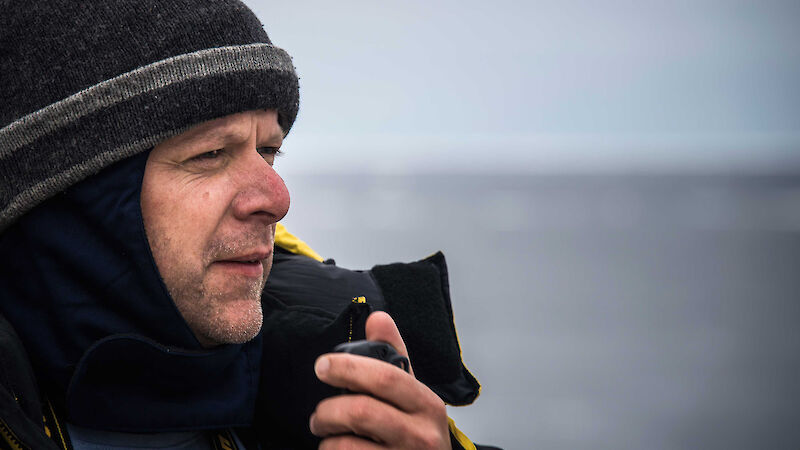Dr Mike Double: BSc (Hons), PhD
Leader, Australian Marine Mammal Centre
Research interests
From inter-tidal snails to great whales (with a lot of birds in between) my research has been diverse, but the uniting theme has been the use of molecular tools to address evolutionary, ecological and conservation-orientated questions.
I started my training with a degree in genetics and zoology at Leeds University that was quickly followed by doctoral research at Leicester University. There I applied single-locus DNA fingerprinting to reveal cryptic breeding behaviours in birds. From tedious southern blotting and minisatellites I graduated to microsatellite genotyping in my first post-doctoral job with the inspirational Andrew Cockburn at the Australian National University. Jumping from one postdoc to another, I stayed with Andrew’s team for over 10 years, all the time combining detailed field observations with fine-scale genetic analyses to reveal the unique and fascinating behaviours of superb fairy-wrens. On the side I collaborated in studies of antechinus, fiddler crabs, spiders and many other bird species, but the principal distraction from wrens was my research on the taxonomy, genetics and conservation of albatrosses.
My work with seabirds, and especially albatross, introduced me to marine conservation issues and a familiarity with bobbing around the ocean in small boats. With these qualifications and my genetics background I joined the Australian Marine Mammal Centre in 2007 to initiate a population genetic research program on Australia’s baleen whales.
My major research focus now is the Antarctic blue whale project. This flagship project of the Southern Ocean Research Partnership aims to estimate the abundance of blue whales in the Southern Ocean, 50 years after whalers killed some 350,000 individuals; as well as examine their distribution, population structure and migration routes. In preparation for this project we have been investigating the use of acoustic sonobuoys to track blue whales in Victorian waters. The technology and methodology needs to be tested in an area where we can more easily locate and track whales, in order to maximise our chances of finding and tracking blue whales over vast distances in the Southern Ocean.
As Leader of the Australian Marine Mammal Centre, based at the Australian Antarctic Division in Hobart, I have a tremendous opportunity to positively influence the direction, shape and quantity of science that supports improved conservation outcomes for marine mammals, and to ensure that government policy and management decisions are fully informed with science.
Current projects
- #4600: Conservation and management of Australian and Antarctic whales – post-exploitation status, distribution, foraging ecology and their role in the Southern Ocean ecosystem, Chief investigator
- #4101: Antarctic baleen whale habitat utilisation and linkages to environmental characteristics, Chief investigator
- #4102: Population abundance, trend, structure and distribution of the endangered Antarctic blue whale, Chief investigator

